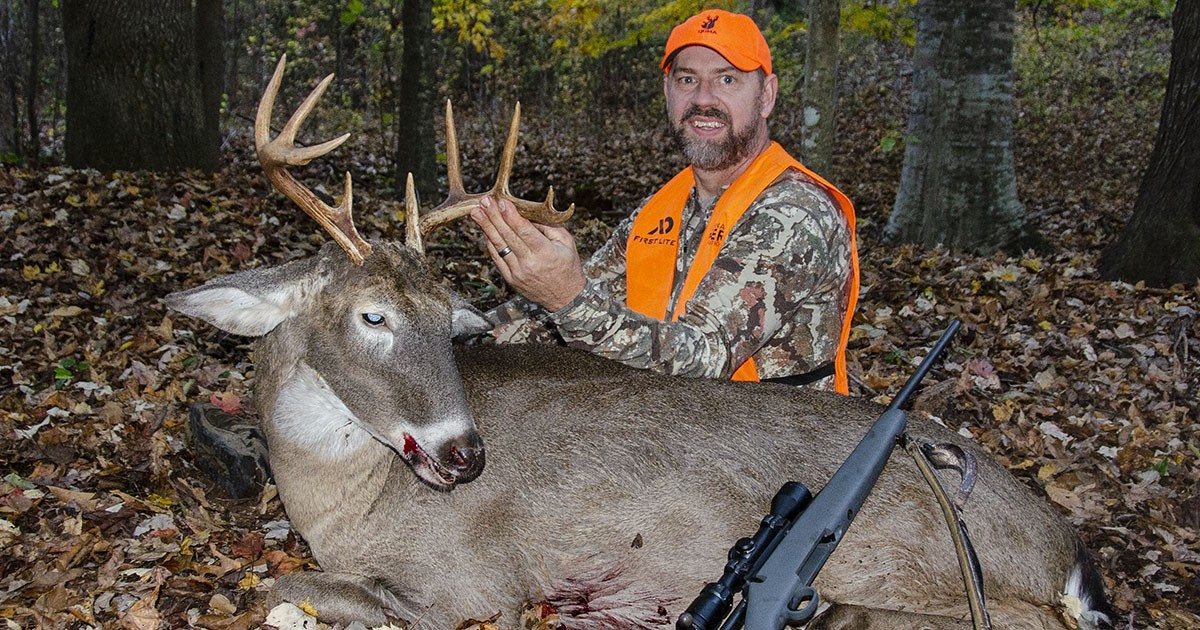It’s been a year since my wife and I embarked on a new adventure, purchasing our home and 15 acres in west-central Georgia. While home improvements took precedence, the time spent on the property proved invaluable. 2021 was a learning experience, providing a foundation for what I hope to achieve in 2022. This article serves as A Bit Of A Fixer Upper Trophy Guide, sharing my experiences and insights on transforming a small property into a haven for wildlife and a successful hunting ground.
Gathering the Right Equipment
One of the biggest challenges in my first year was acquiring the necessary tools. I started with a chainsaw, essential for many tasks. Over time, I added a Tracker OX400 utility vehicle for navigating the land, an electric sprayer for food plots and weed control, and a pull-behind spreader for seed, lime, and fertilizer. My 2022 wish list includes a leaf blower for firebreaks, a drip torch for prescribed burns, and the herbicide needed for forest stand improvement (FSI) work. Reviving my garden tiller is also a priority for food plot and firebreak maintenance.
Forest Stand Improvement (FSI)
My habitat improvements in the first year were limited but significant. The back half of the property is mostly open hardwoods needing FSI to promote understory growth. In early 2021, I tackled a small FSI project, experimenting with the girdle-and-squirt method. Using a 50:50 glyphosate and water mix, I treated sweetgum and poplar trees, achieving 100% effectiveness. In the coming months, I will be taking out a lot of trees, some much more hardy than sweet gum and poplar, including numerous hickory, beech, and oak trees, so I plan to shift to the “Craig Harper cocktail” (imazapyr, triclopyr, and water) for more effective results.
My FSI goal for 2022 is to complete work on approximately seven acres of hardwoods this winter with the help of some friends, followed by a dormant-season burn to stimulate understory growth.
Establishing a Trail Network
Much of my time was spent clearing young pine trees to create access paths and a food plot. While heavy machinery would have been faster, I opted for the manual approach using a chainsaw. This method was cost-effective but time-consuming. Now, I can navigate most of the property with the utility vehicle, simplifying property maintenance and deer retrieval.
Developing a Food Plot
Another key goal was establishing a small food plot to attract deer. Clearing the thick, young loblolly pines required significant chainsaw work. With scattered stumps hindering tilling, I killed the ground cover with glyphosate and broadcast a crimson clover and wheat mix before rain. The results were less than ideal. Soil compaction from previous use as a cow pasture is likely the culprit. While a soil sample indicated the need for lime and fertilizer, it wasn’t severe enough to fully explain the poor growth.
For 2022, I plan to expand the food plot, till the area with my garden tiller, apply lime and fertilizer based on soil sample recommendations, and potentially plant a summer plot to enhance soil health and attract deer.
Planting Soft Mast Trees
My initial plans included a soft-mast tree orchard. In 2021, I planted two southern crabapples and two grafted American persimmons. Unfortunately, one persimmon didn’t survive. However, further exploration revealed existing American persimmon trees on the property. In 2022, I aim to plant more soft mast trees and maintain the existing ones. Grafting persimmon trees with known female branches is also a potential project to ensure fruit production.
Hunting Success
Despite limited habitat improvements, I achieved a significant goal: harvesting my first deer on the property. In fact, I harvested two! The first was a decent 7-pointer that frequented the property. After several unsuccessful hunts, I realized he was likely spotting me. On my fifth attempt, I quietly sat on the ground behind stumps from my FSI project. At 6:45 p.m. on October 9, he entered the ridge above me, and the Mathews bow was successful.
A month later, I decided to hunt in the same area. An hour into my sit, I spotted a buck cruising along a bench below me. Initially, I wasn’t interested, but upon closer inspection, I realized it was the “Big 9” I had been watching since summer.
The Big 9, named for his large body, had become rare on my cameras since shedding his velvet. Knowing he was at least 4½ years old, I harvested him, filling my second and final buck tag for the 2021-2022 Georgia deer season. Harvesting deer on my own property made it one of my best deer seasons ever.
Key Lessons Learned
The biggest accomplishment was the knowledge gained. I enjoyed exploring the property and identifying plants. I discovered beneficial native plants like white and red oaks, muscadine vines, a paw paw tree, blackberry brambles, persimmon trees, and a mulberry tree. Conversely, I also found undesirable plants such as Chinese privet, Chinese tallow trees, Chinaberry trees, Callery pear, fescue, and multiflora rose. In 2022, I will focus on removing these invasives and promoting beneficial native plants.
Understanding local deer behavior and how they utilize the property was another crucial lesson. I learned their bedding areas, entry points, and preferred terrain. I identified rub trees, scrape locations, and seasonal changes in property use.
Using Moultrie trail cameras, I observed a remarkable number of bucks traversing the property during the rut. A conservative estimate would be a dozen different 6-point or better bucks, with at least half being 3½ years old or older.
Conclusion: The Fixer Upper Trophy
While I didn’t accomplish everything I hoped for in 2021, the experience was invaluable. I gained knowledge, and I harvested venison from my own property for the first time. As the 2021-2022 deer season ends, I’m eager to continue transforming this “fixer upper” into a wildlife haven. Even on a small property, the work is never truly done.
